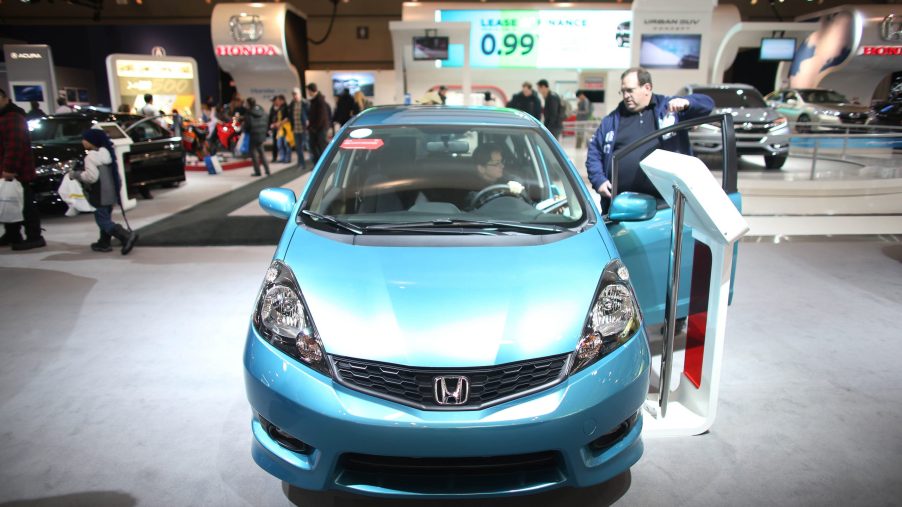
The Honda HR-V Is Responsible for the Death of the Fit
The small Honda Fit hatchback has been in the brand’s lineup for more than a decade and is its most budget-friendly vehicle in the U.S. But when Honda decided to start adding more vehicles to its crossover and SUV lineup, it probably didn’t predict that one of them would wind up being responsible for the death of the Fit. Here’s how the Fit hatchback got kicked out by the Honda HR-V subcompact SUV.
It’s the end of the line for the Honda Fit
The Fit subcompact hatchback starts around $17,000 and stands as Honda’s most affordable and fuel-efficient non-hybrid vehicle in the lineup, earning up to 33 mpg in the city and 40 mpg on the highway.
But according to recent news, that won’t be the case for long. According to Green Car Reports, Honda recently confirmed that the newest generation of the Fit won’t be coming to the U.S. After the 2020 Honda Fit leaves dealerships, Americans will see the small hatchback no more. But why would Honda, known for its balance of budget and quality, choose to ditch its cheapest vehicle?
According to CarSalesBase, the Honda Fit’s sales numbers have been on a slow decline for many years. In fact, 2019 marked nearly five years of a constant decrease in sales, totaling just more than 35,000 units for the year.
Its most popular year appears to be 2008 when Honda sold nearly 80,000 Fits in the U.S. But the Fit’s popularity has struggled to come anywhere near that since. And when Honda used the Fit to help design a new American crossover, it may have unintentionally become its replacement.
The Honda Fit’s replacement
It appears American buyers prefer the HR-V over the fit, and there’s a reason why people might compare the two. The HR-V debuted as Honda’s smallest crossover SUV, but its design is based on the Fit’s subcompact hatchback.
While the Fit boasts a cheaper price tag and better fuel-efficiency, it is only by a small margin. In fact, with a comparable price tag, more space, and better refinement, SUV-driven Americans clearly see the HR-V as the Fit’s bigger and better brother.
The Honda HR-V has been shockingly popular since the day it debuted. Its first full year of sales brought in bigger numbers than the Fit on a good year, selling more than 41,000 in the U.S. in 2015. And unlike the Fit, the HR-V’s popularity in the U.S. has only grown, as more Americans begin to lean toward crossovers and SUVs. In 2019, Honda sold more than 99,000 HR-Vs, making a clear distinction in the lineup as to which is America’s favorite.
The HR-V has even been breaking records. According to Honda, the HR-V’s sales for 2019 increased 15.9% over the previous year, setting a new annual sales record. The HR-V broke yet another record in December 2019, selling 45.7% more than the previous December.
The HR-V: Honda’s most affordable U.S. vehicle
The 2020 Honda HR-V starts at around $20,000 and comes standard with front-wheel drive and a four-cylinder engine that makes 141 hp. Although not as affordable as the Fit, the HR-V’s price is comparable and currently makes it Honda’s most affordable vehicle in the lineup.
According to U.S. News, the 2020 Honda HR-V can get up to an estimated 28 mpg in the city and 34 mpg on the highway; great for the segment. It also features “expansive cargo room” for its subcompact SUV segment, as well as “nimble handling and comfortable ride.”
The Honda HR-V even comes with practical features like rear seats that flip up, as well as down, to accommodate both tall and long items.


